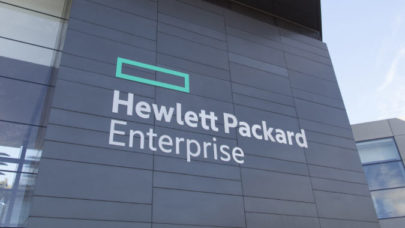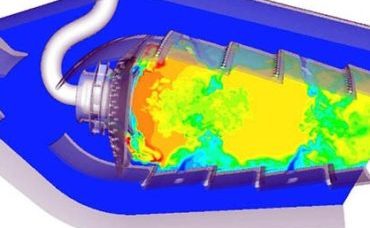
Dr. Eng Lim Goh Hails New Frontier of Scalable Learning
March 2, 2017
Dr. Eng Lim Goh is one of the leading HPC visionaries of our time. He's been the driving force behind SGI's technical computing program for nearly two decades, Read more…

TSUBAME3.0 Points to Future HPE Pascal-NVLink-OPA Server
February 17, 2017
Since our initial coverage of the TSUBAME3.0 supercomputer yesterday, more details have come to light on this innovative project. Of particular interest is a new board design for NVLink-equipped Pascal P100 GPUs that will create another entrant to the space currently occupied by Nvidia's DGX-1 system, IBM's "Minsky" platform and the Supermicro SuperServer (1028GQ-TXR). Read more…

Tokyo Tech’s TSUBAME3.0 Will Be First HPE-SGI Super
February 16, 2017
In a press event Friday afternoon local time in Japan, Tokyo Institute of Technology (Tokyo Tech) announced its plans for the TSUBAME3.0 supercomputer, which w Read more…

HPE-SGI to Tackle Exascale and Enterprise Targets
November 22, 2016
At first blush, and maybe second blush too, Hewlett Packard Enterprise’s (HPE) purchase of SGI seems like an unambiguous win-win. SGI’s advanced shared memory technology, its popular UV product line (Hanna), deep vertical market expertise, and services-led go-to-market capability all give HPE a leg up in its drive to remake itself. Bear in mind HPE came into existence just a year ago with the split of Hewlett-Packard. The computer landscape, including HPC, is shifting with still unclear consequences. One wonders who’s next on the deal block following Dell’s recent merger with EMC. Read more…

US, China Vie for Supercomputing Supremacy
November 14, 2016
The 48th edition of the TOP500 list is fresh off the presses and while there is no new number one system, as previously teased by China, there are a number of n Read more…

DoD Awards $53 Million for New Supercomputers
October 27, 2016
The US Army is announcing new contracts with Cray and SGI to provide "high performance computing systems, administration, and maintenance" to the Department of Defense (DoD) High Performance Computing Modernization Program. Read more…

SGI, ANSYS Set New Record for Scaling Commercial CAE Code
September 27, 2016
SGI, the supercomputing vendor recently acquired by HPE, has teamed with ANSYS, the product engineering and simulation software company, to set a new world reco Read more…

HPE Gobbles SGI for Larger Slice of $11B HPC Pie
August 11, 2016
Hewlett Packard Enterprise (HPE) announced today that it will acquire rival HPC server maker SGI for $7.75 per share, or about $275 million, inclusive of cash and debt. The deal ends the seven-year reprieve that kept the SGI banner flying after Rackable Systems purchased the bankrupt Silicon Graphics Inc. for $25 million in 2009 and assumed the SGI brand. Bringing SGI into its fold bolsters HPE's high-performance computing and data analytics capabilities and expands its position... Read more…

- Click Here for More Headlines

Whitepaper
Transforming Industrial and Automotive Manufacturing
In this era, expansion in digital infrastructure capacity is inevitable. Parallel to this, climate change consciousness is also rising, making sustainability a mandatory part of the organization’s functioning. As computing workloads such as AI and HPC continue to surge, so does the energy consumption, posing environmental woes. IT departments within organizations have a crucial role in combating this challenge. They can significantly drive sustainable practices by influencing newer technologies and process adoption that aid in mitigating the effects of climate change.
While buying more sustainable IT solutions is an option, partnering with IT solutions providers, such and Lenovo and Intel, who are committed to sustainability and aiding customers in executing sustainability strategies is likely to be more impactful.
Learn how Lenovo and Intel, through their partnership, are strongly positioned to address this need with their innovations driving energy efficiency and environmental stewardship.
Download Now
Sponsored by Lenovo
Whitepaper
How Direct Liquid Cooling Improves Data Center Energy Efficiency
Data centers are experiencing increasing power consumption, space constraints and cooling demands due to the unprecedented computing power required by today’s chips and servers. HVAC cooling systems consume approximately 40% of a data center’s electricity. These systems traditionally use air conditioning, air handling and fans to cool the data center facility and IT equipment, ultimately resulting in high energy consumption and high carbon emissions. Data centers are moving to direct liquid cooled (DLC) systems to improve cooling efficiency thus lowering their PUE, operating expenses (OPEX) and carbon footprint.
This paper describes how CoolIT Systems (CoolIT) meets the need for improved energy efficiency in data centers and includes case studies that show how CoolIT’s DLC solutions improve energy efficiency, increase rack density, lower OPEX, and enable sustainability programs. CoolIT is the global market and innovation leader in scalable DLC solutions for the world’s most demanding computing environments. CoolIT’s end-to-end solutions meet the rising demand in cooling and the rising demand for energy efficiency.
Download Now
Sponsored by CoolIT
Advanced Scale Career Development & Workforce Enhancement Center
Featured Advanced Scale Jobs:
HPCwire Resource Library
HPCwire Product Showcase
© 2024 HPCwire. All Rights Reserved. A Tabor Communications Publication
HPCwire is a registered trademark of Tabor Communications, Inc. Use of this site is governed by our Terms of Use and Privacy Policy.
Reproduction in whole or in part in any form or medium without express written permission of Tabor Communications, Inc. is prohibited.
























